Shade Loving Ground Covers Ohio for Low-Maintenance, Attractive Gardens
Gardening in shaded parts of Ohio isn’t easy, thanks to that lack of sunlight. Still, picking the right groundcovers can turn a dim spot into something you actually want to look at.
Plants like pachysandra, hostas, and vinca minor handle low light just fine. They offer steady cover and help keep soil from washing away in those shadowy corners.
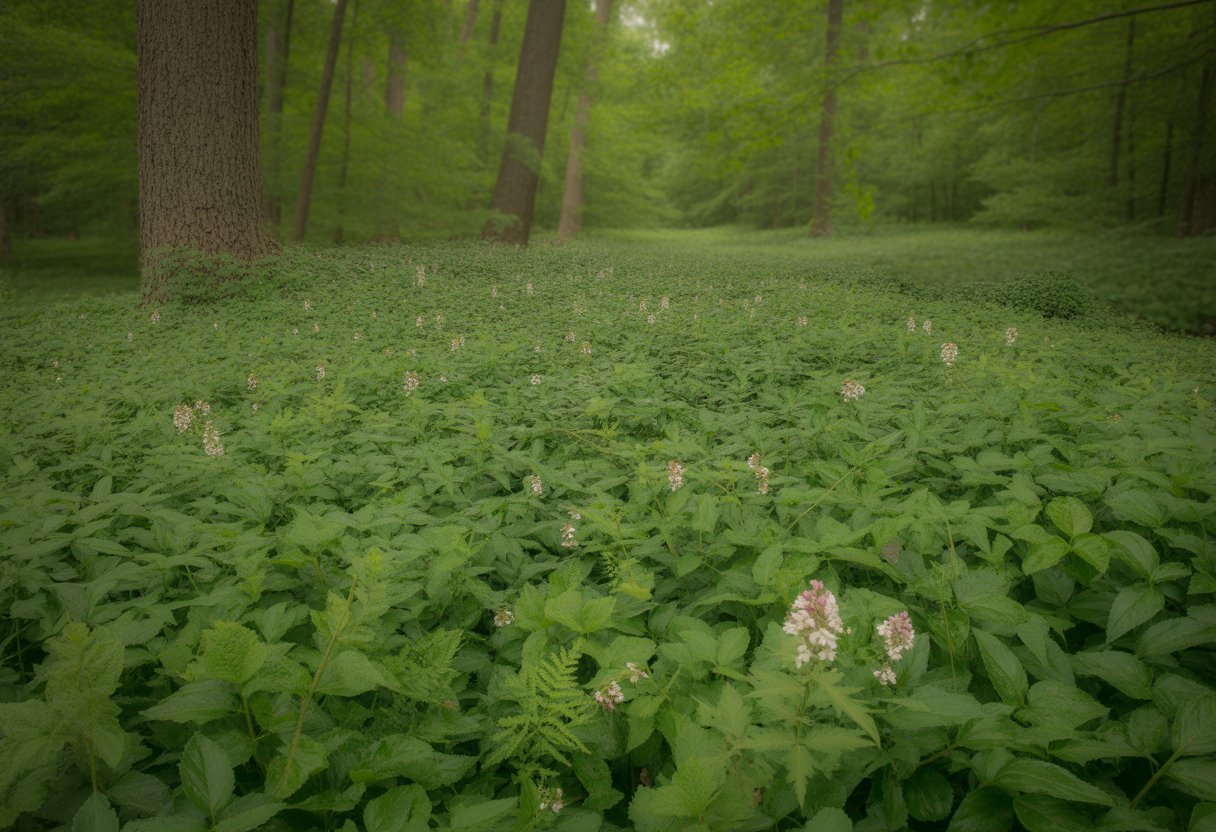
These groundcovers fit right in with Ohio’s climate. You don’t have to fuss over them much, but they still fill your garden with texture and a fresh, green vibe.
They crowd out weeds and hold onto moisture, which is a big win if you want something low-effort in the less sunny parts of your yard.
Overview of Shade Loving Ground Covers in Ohio
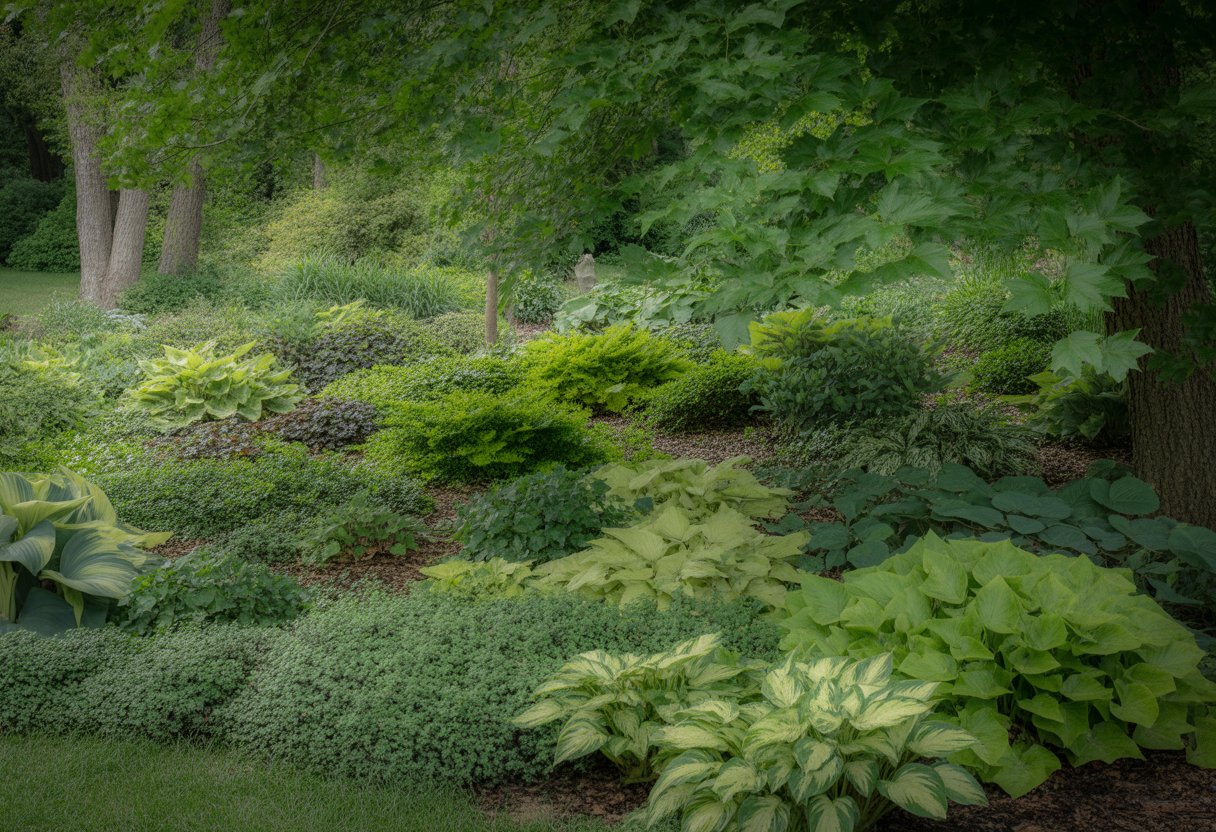
Ohio offers a surprising variety of shade-loving ground covers. The best pick depends on how much light you get and what kind of soil you’re dealing with.
If you know your shade, your odds of success go way up.
Defining Shade Types in Ohio
Shady spots in Ohio range all the way from partial shade (think 3-6 hours of dappled sunlight) to deep shade where the sun barely peeks through. Partial shade usually happens under big leafy trees, while deep shade lurks under evergreens or in old forests.
Dry shade pops up under trees with greedy, shallow roots. These areas need tough ground covers that don’t mind low water and little light.
If you can spot these shade types, you’ll match plants to microclimates much more easily.
Benefits of Ground Covers for Shady Areas
Ground covers in shade help stop soil from washing away, hang onto moisture, and block out weeds. They’re a solid alternative to grass in those dark spots where lawns just won’t take.
They also make a shade garden look more finished, with leaves that can be plain green, striped, or even show off flowers sometimes.
You’ll spend less time mowing or watering than you would with turf.
Key Considerations for Ohio Landscapes
Think about your soil—Ohio’s can be heavy clay or sandy, and that matters for drainage. The spot’s moisture level and the size the plants will get are big deals too.
Dry shade or soggy shade? That’s a crucial difference. Don’t crowd your plants; let them spread out.
A little prep, like amending the soil and mulching, pays off in healthier ground covers.
Top Shade Loving Ground Covers for Ohio Gardens
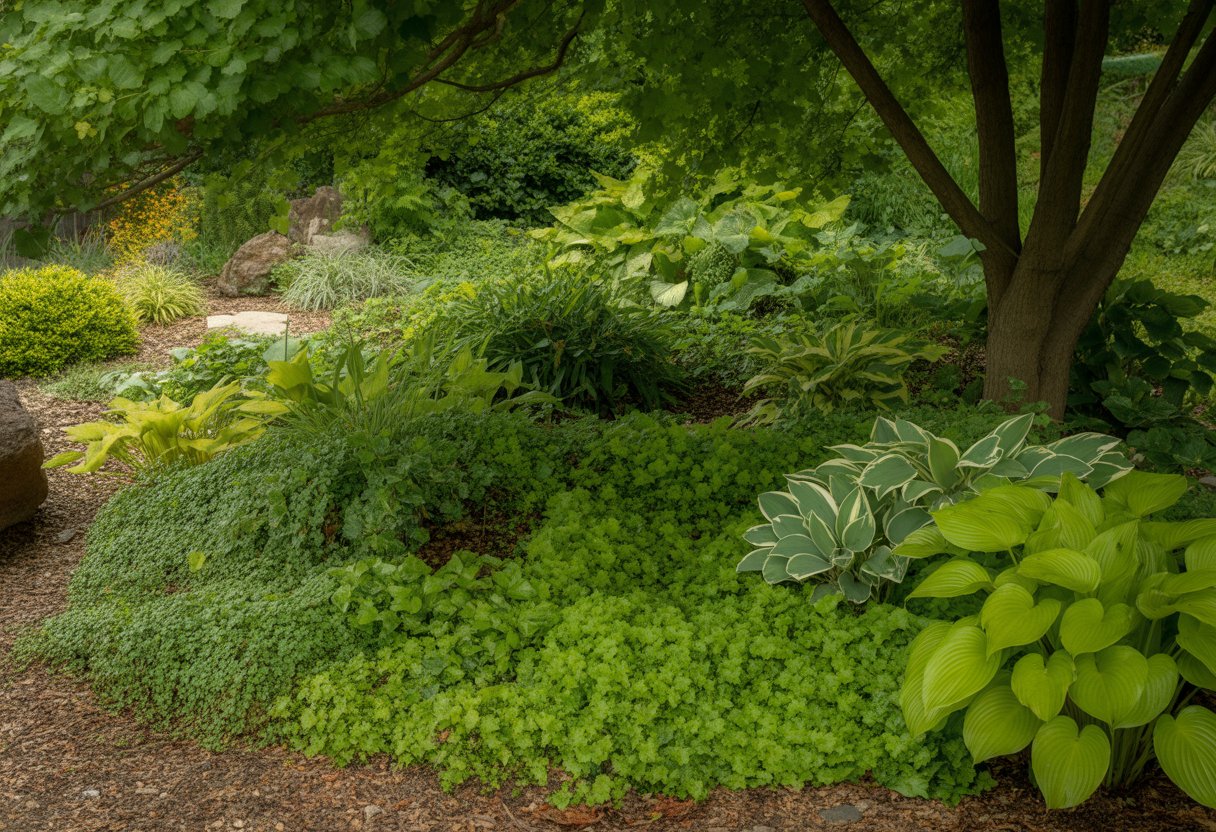
Lots of ground covers do well in Ohio’s shade. Some are evergreen, some flower, and a few are local natives that just seem to “get” the climate.
Evergreen Options for Year-Round Color
Evergreen groundcovers stick around all winter, so your garden doesn’t look dead half the year. Pachysandra terminalis and Japanese pachysandra make dense mats that crowd out weeds and handle Ohio’s shade and soil without much fuss.
Vinca minor (periwinkle) is another classic. Its shiny leaves spread fast, but you might have to keep it from taking over. Carex flacca gives you a blue-green grass look and does fine in partial shade.
Mondo grass and Liriope form tidy, grass-like clumps that stay green all year. They’re great for edging or small patches, but you’ll need some patience—they’re slow to fill in, though once they do, weeds don’t stand a chance.
Flowering Ground Covers for Seasonal Interest
If you want some color, shade-tolerant flowering ground covers are your friends. Phlox divaricata (woodland phlox) blooms in purple or lavender and likes moist shade.
Chrysogonum virginianum (green and gold) gives you yellow flowers and evergreen leaves, basically acting as living mulch. Saxifraga stolonifera has delicate white flowers and spreads with red runners.
Epimedium spp. pops up with dainty spring flowers and heart-shaped leaves that might even turn color in fall. These plants attract pollinators and look great, but they do appreciate good soil.
Native and Low-Maintenance Choices
Native ground covers just make life easier in Ohio. Asarum canadense (wild ginger) forms thick mats of shiny, heart-shaped leaves that block weeds.
Galium odoratum (sweet woodruff) smells nice when you crush it and spreads fast in moist shade. Packera aurea (golden ragwort) handles dry shade and throws up bright yellow flowers in spring.
Waldsteinia ternata is tough, spreads by underground stems, and gives you an evergreen mat with small yellow flowers. These options save water and fertilizer and even boost your soil.
Ground Covers for Deep and Dry Shade
Deep, dry shade is tricky—barely any light or moisture. Aegopodium podagraria (bishop’s weed) is aggressive but can handle it, though you’ll want to keep an eye on it to stop it from running wild.
Hosta varieties are favorites for big, textured leaves and will put up with dry shade after they settle in. They’re not true ground covers, but with mulch, they do the job.
Spurge (Euphorbia spp.) works in dry shade, stays evergreen, and has lime-green leaves. Creeping thyme usually likes sun, but a few types will survive dappled shade and the occasional dry spell, plus you get that great scent.
Pick plants that match your tricky spots—it’s worth the effort.
Designing and Planting a Shade Ground Cover Garden
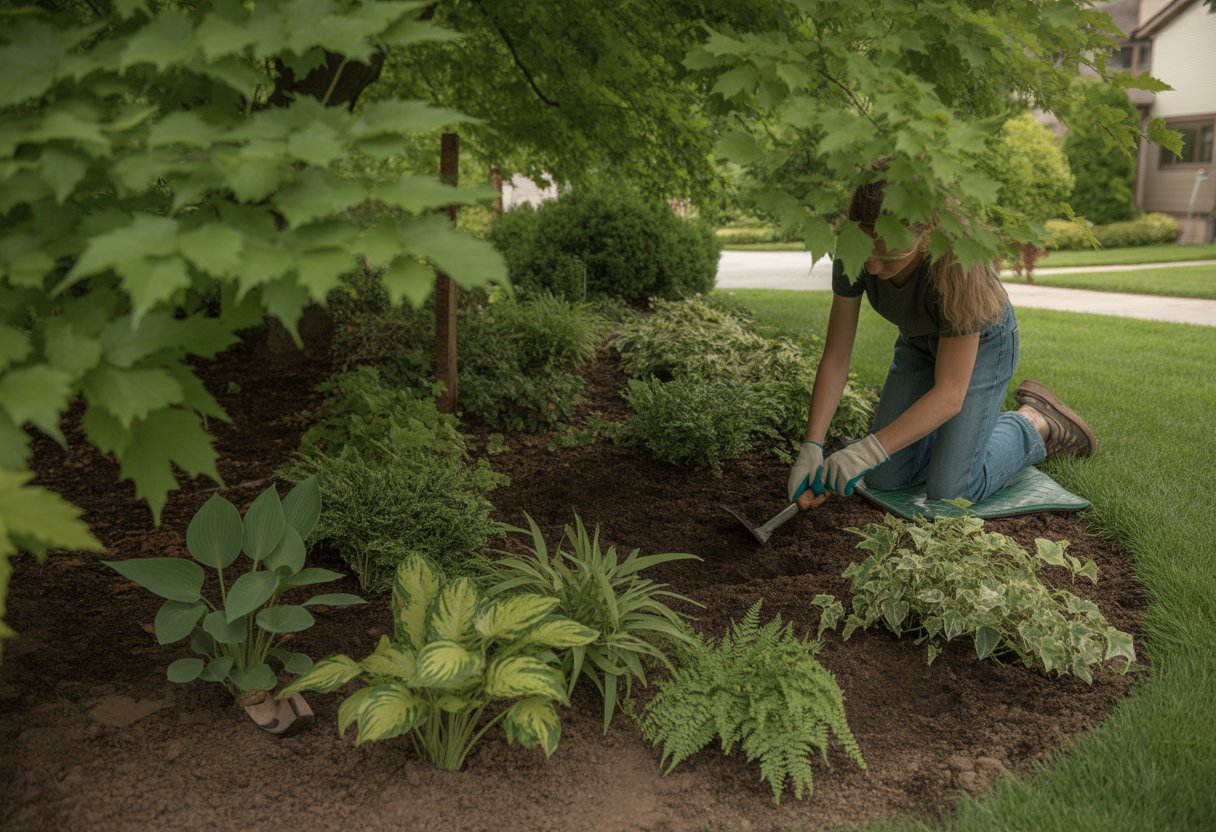
Setting up a shade ground cover garden starts with soil quality, smart planting, and picking the right plants. A little planning goes a long way for a garden that looks good and stays healthy.
Soil Preparation and Amendment
Soil in shady areas is often low on nutrients and doesn’t drain well. It’s a good idea to test your soil’s pH and texture before you plant anything.
Most shade groundcovers like soil that’s a little acidic to neutral, with plenty of organic matter.
Mix in some aged compost or leaf mold to boost fertility and hold moisture. Heavy clay isn’t great—it stays too wet and can rot roots. If you’re stuck with it, try raised beds or mounding up the soil for better drainage.
Loosen the soil down about 6-8 inches. Roots need space, and this helps prevent the compaction you get under trees.
Planting Techniques and Layout
Plant in early spring or fall for the best results. Give each plant the space it needs when it’s full-grown—Pachysandra and Vinca minor usually want 6-12 inches between them.
A staggered or triangular layout fills in faster and makes the “living mulch” effect stronger.
Water well after planting to settle things in. A layer of shredded bark or leaf mulch helps keep moisture in and the soil cool.
Combining Textures and Colors
Mix up your groundcovers for more interesting shade gardens. Try pairing fine-textured ferns with broadleaf plants like Lamium or Heuchera.
Go for foliage in different shades—green, silver, bronze, or variegated—to break up the monotony. You don’t need a ton of flowers to have visual depth.
Blending evergreen and deciduous groundcovers keeps things looking lively all year. The mix also helps insects and improves soil over time.
Care and Maintenance for Shade Loving Ground Covers
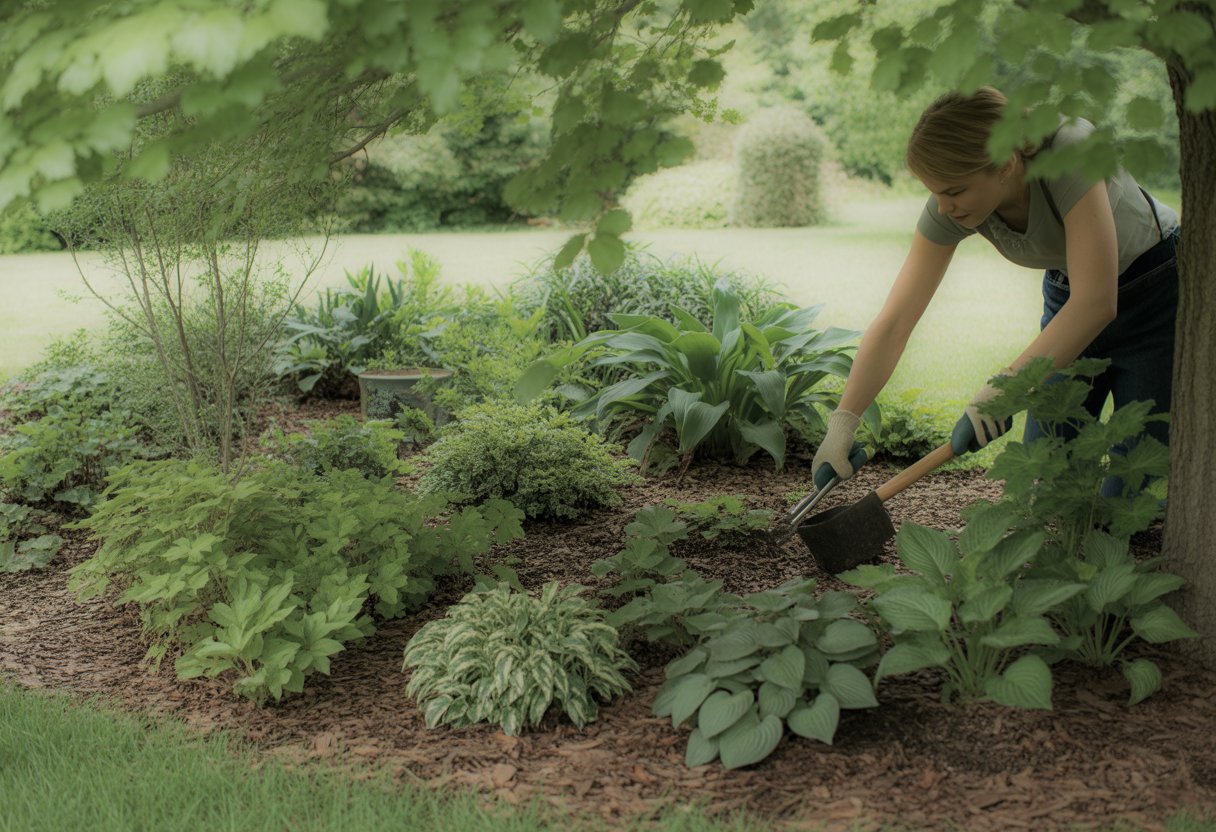
If you want your ground covers to thrive, a bit of care goes a long way. Focus on water, weed control, and a little seasonal tidying to keep things going strong.
Watering and Mulching Essentials
Ground covers like Carex flacca need steady moisture, especially their first year. They like soil that’s moist but drains well—don’t let them sit in soggy dirt.
Water deeply once or twice a week, depending on rain and your soil.
Mulch is your friend. Use something organic, like shredded bark or leaf mold, and spread it 2-3 inches deep. Keep it away from plant stems to avoid rot.
Mulch keeps the soil cool, holds moisture, and blocks weeds.
Managing Weeds and Pests
Weeds are a pain, especially when ground covers are getting started. You’ll need to weed regularly the first year, and hand-pulling is best so you don’t mess up roots.
Once the ground covers fill in, their leaves block most weeds. If you still get some, a thin layer of mulch usually handles it.
Pests aren’t a huge problem, but watch for slugs and snails—they love damp, shady spots. Traps or barriers can help if they show up.
Seasonal Maintenance for Longevity
Seasonal maintenance keeps plants healthy and helps them last longer. In early spring, cut away dead foliage so new growth has room and disease stays at bay.
Divide dense patches every couple of years. That way, air moves better and the plants spread out more naturally.
When late fall rolls around, toss on a light mulch to shield roots from harsh freezes. Skip the heavy fertilizer—shade covers really don’t need much extra food.
Keep an eye on things all year. Spotting problems early makes it a lot easier to keep everything thriving for the long haul.

